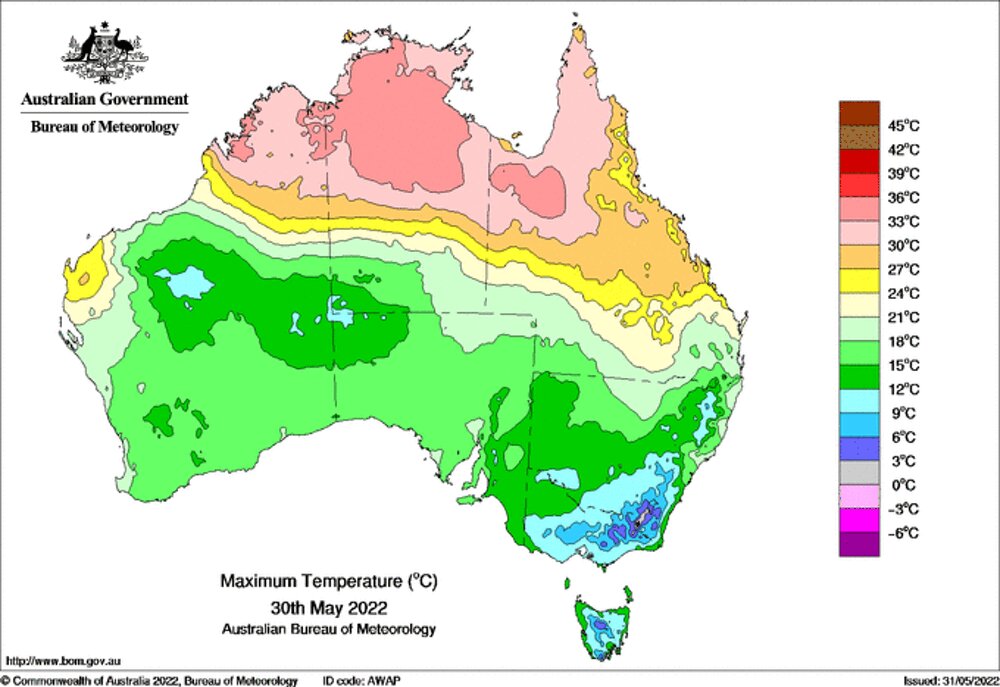What Season Is Australia in Now? A Guide to Australia’s Current Season and Climate

Understanding Australia's current season is essential for travelers and locals alike, as it significantly influences activities, climate, and lifestyle. Australia experiences unique seasonal variations due to its vast size and varied geography. With summer scorching in the northern regions while the southern parts enjoy winter chills, the country's climate can be quite diverse. This guide aims to provide insight into what season Australia is currently in, highlighting key characteristics of the weather, temperature ranges, and recommended activities for each region. Whether you're planning a visit or curious about the Australian climate, this article will serve as your comprehensive resource.
What Season Is Australia In Now?
Australia experiences a distinct seasonal cycle that is opposite to that of the Northern Hemisphere due to its location in the Southern Hemisphere. As of now, Australia is in the spring season, which runs from September to November. During this time, temperatures begin to rise, flowers bloom, and the country enjoys a mix of cool and warm weather. The onset of spring signals a period of renewal and growth, making it a popular time for outdoor activities and events across the nation.
Understanding Australia's Seasons
Australia has four main seasons: summer, autumn, winter, and spring. While the general seasonal pattern is similar to that in other parts of the world, the timing is different. For instance, summer in Australia lasts from December to February, while winter spans June to August. Each season brings its own unique weather conditions and characteristics, heavily influenced by the country's vast geography and diverse climates.
Spring Weather in Australia
During spring, Australians can expect a delightful mix of sunny days and occasional rain. Average temperatures range from 15°C to 25°C (59°F to 77°F), making it an ideal time for gardening, picnics, and festivals. This season is also significant for farmers and gardeners as it marks the beginning of the growing season, encouraging an abundance of activity in agriculture across the country.
Wildlife Activity in Spring
Spring is a vibrant time for wildlife in Australia. Many animals emerge from hibernation, and migratory birds return from their travels. The increase in vegetation provides habitats for various species, making it a prime time for wildlife enthusiasts to observe the remarkable biodiversity of the continent. Breeding season for many creatures occurs during this period, leading to an increase in animal sightings in parks and reserves.
Spring Festivals and Events
Australia is known for its lively spring festivals and events that celebrate the season's arrival. From flower festivals like the Canberra Floriade to various cultural and food festivals, communities across the country engage in numerous activities that foster local traditions. These gatherings not only highlight the beauty of spring but also promote tourism and local economies.
See also:
Travel Tips for Spring in Australia
For those planning to visit Australia during spring, it’s essential to prepare for variable weather. Packing layers is advisable, as temperatures can change throughout the day. Additionally, spring is a popular tourist season, so booking accommodations and attractions in advance will ensure a smooth experience. Make sure to also explore rural areas, where the wildflowers bloom spectacularly during this time.
| Season | Months | Weather |
|---|---|---|
| Spring | September - November | 15°C to 25°C (59°F to 77°F) |
| Summer | December - February | 25°C to 35°C (77°F to 95°F) |
| Autumn | March - May | 10°C to 20°C (50°F to 68°F) |
| Winter | June - August | 5°C to 15°C (41°F to 59°F) |
How cold is Australia in winter?

Australia experiences a diverse range of climates, which means winter temperatures can vary significantly across the continent. Generally, winter occurs from June to August, with varying conditions from the northern to the southern regions.
While northern regions like Queensland can enjoy mild temperatures, the southern areas, particularly Tasmania and parts of Victoria and New South Wales, can experience much colder weather.
Average Winter Temperatures
In the southern state of Tasmania, winter temperatures can drop to around 0°C to 10°C (32°F to 50°F). In contrast, cities like Brisbane in Queensland experience milder winters with temperatures generally ranging from 10°C to 21°C (50°F to 70°F).
Cold Weather in Southern Australia
Southern Australia often has cooler temperatures and increased rainfall in winter.

- The city of Melbourne can see temperatures between 6°C and 14°C (43°F to 57°F).
- Adelaide also experiences a chill, with temperatures averaging 7°C to 15°C (45°F to 59°F).
- In some mountainous regions, such as the Australian Alps, temperatures can fall well below 0°C (32°F), creating excellent conditions for snow.
Differences Between Northern and Southern Regions
Australia's size leads to distinct differences in winter conditions.
- In the northern regions, such as Darwin, winter temperatures typically hover around 21°C to 30°C (70°F to 86°F), making it much warmer than the southern states.
- The contrast creates a clear divide, where the north remains relatively dry and warm.
- Conversely, southern states can experience cold fronts, leading to frost and some snowfall.
Impact of Ocean Currents
The surrounding ocean influences Australia's winter climate.
- The Southern Ocean brings cold fronts that can lead to lower temperatures and rainfall in the south.
- Conversely, warm currents from the Coral Sea make the northern regions milder.
- This maritime influence plays a crucial role in sustaining different climates across various parts of Australia.
Snowfall in Australia
Snowfall during winter is rare except in certain regions.
- The Australian Alps are the most reliable area for snow, particularly in winter sports locations like Thredbo and Perisher.
- Other regions, such as parts of Victoria and New South Wales, can receive light snowfalls during cold fronts.
- However, snowfall is much less frequent in the northern parts of Australia.
Winter Activities and Tourism
Winter in Australia can mean diverse activities for tourists and locals.
- Many people flock to the ski resorts in the Australian Alps for winter sports such as skiing and snowboarding.
- Conversely, others head north to enjoy the warm winter beaches in places like Cairns and Gold Coast.
- Winter festivals and cultural events also attract tourists, showcasing the country's rich heritage.
Questions from Our Readers
What season is Australia in now?
Australia is currently in the Southern Hemisphere, where the seasons are opposite to those in the Northern Hemisphere. From March to May, Australia experiences autumn, followed by winter from June to August. As of now, if it's October, Australia is in spring, which lasts until November.
How do the seasons in Australia differ from those in the Northern Hemisphere?
The seasons in Australia are reversed compared to the Northern Hemisphere. For instance, while countries like the United States or Europe are enjoying summer in June to August, Australia is experiencing winter during the same months, followed by spring starting in September.
See also:
What are the typical weather patterns during spring in Australia?
During spring in Australia, which spans from September to November, the weather generally becomes warmer and drier. This season is characterized by blooming flowers, increasing temperatures, and often unpredictable weather, including occasional rain.
Are there any major holidays or events in Australia during spring?
Yes, during spring, Australia celebrates several significant events, including Labour Day (or May Day), observed in various states, and the Melbourne Cup, a famous horse racing event held on the first Tuesday of November. These events often embody the festive spirit of the spring season.

If you want to read more articles like What Season Is Australia in Now? A Guide to Australia’s Current Season and Climate, we recommend you check out our Gardeners category.
Leave a Reply
Related Articles